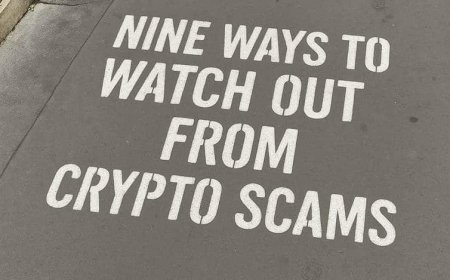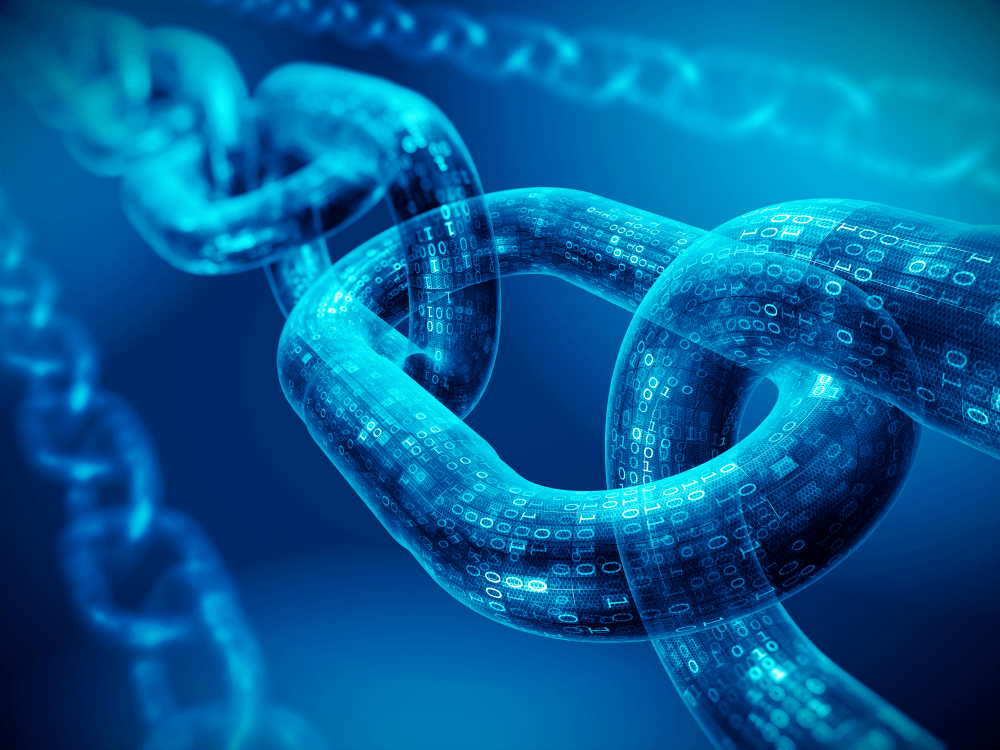Tokenizing Real-World Assets: Architecture, Oracles & Legal Considerations
This blog explores the architecture, oracles, and legal considerations essential for the successful tokenization of real-world assets, offering insights into the future of digital ownership and financial inclusion.

The tokenization of real-world assets (RWA) represents one of the most transformative shifts in modern finance. It merges the stability of tangible assets—such as real estate, commodities, art, and equities—with the efficiency, programmability, and liquidity of blockchain technology. The global market for tokenized assets is projected to surpass $16 trillion by 2030, according to Boston Consulting Group, highlighting how deeply this paradigm will reshape ownership, investment, and value exchange.
Unlike purely digital tokens, RWA tokens are anchored to physical or off-chain assets, giving them intrinsic value and regulatory implications. Their impact extends across sectors: property ownership becomes fractional, fine art becomes tradable, and gold or carbon credits can move between markets as digital tokens with transparent provenance. The promise is compelling—turn illiquid assets into liquid, divisible, and borderless instruments while ensuring legal enforceability and investor protection.
However, realizing this vision requires more than minting tokens. It demands a robust architectural framework, reliable oracle systems for accurate off-chain data representation, and a deep understanding of jurisdictional compliance and legal structures. Each layer—from smart contract logic to asset custody—must be designed for both technical precision and regulatory resilience.
The Fundamentals of RWA Tokenization
At its core, RWA tokenization involves creating blockchain-based representations of assets that exist outside the digital realm. Each token corresponds to a verifiable claim on the underlying asset, whether it is a share of a building, a bond, or a shipment of oil. This token can then be traded, collateralized, or integrated into decentralized finance (DeFi) ecosystems.
Key components include:
Asset Identification and Legal Wrapping: Determining which asset is to be tokenized and ensuring ownership or claim rights can be legally enforced through a custodial or trust structure.
Valuation and Verification: Establishing the market value of the asset and authenticating its existence through auditors, appraisers, or legal documentation.
Token Creation: Issuing blockchain tokens that represent fractional or complete ownership, typically as ERC-20 or ERC-3643 compliant tokens on EVM chains, or SPL tokens on Solana.
Custody and Governance: Managing how the underlying asset is held—by a licensed custodian, SPV (special purpose vehicle), or DAO-governed vault—to maintain investor protection.
Trading and Lifecycle Management: Facilitating secondary market trading, distribution of yields, buybacks, or redemptions using smart contracts.
When implemented correctly, tokenization not only democratizes access to traditionally exclusive assets but also provides faster settlement, real-time auditing, and programmable compliance. For example, a real estate developer can issue 100,000 tokens representing fractional ownership in a property; investors across borders can buy and trade them, while all rental income distributions are handled automatically through smart contracts.
Partnering with a real-world asset tokenization company ensures seamless integration of blockchain technology with tangible assets, enabling secure and compliant tokenization. Their expertise streamlines the complex processes of asset valuation, legal structuring, and regulatory compliance, facilitating efficient tokenization for institutional adoption.
Tokenization Architecture: Building the Infrastructure of Trust
The architecture of RWA tokenization is a multilayered system that bridges the physical and digital economies. A well-structured architecture ensures security, auditability, and compliance while maintaining performance and user experience.
A. Core Architectural Layers
Asset Layer:
This is the real-world foundation—physical properties, securities, or commodities—verified through title deeds, certifications, or other legal instruments. Each asset must be mapped with clear identifiers (e.g., land registry numbers or warehouse receipts).
Legal Wrapper Layer:
Since blockchain ownership doesn’t automatically translate to legal ownership, this layer creates a bridge through legal entities—usually a Special Purpose Vehicle (SPV) or trust. These entities hold the asset and issue tokens that represent claims or shares. This ensures that ownership transfer via tokens has enforceable legal meaning.
Tokenization Layer (Blockchain Layer):
Smart contracts define the rules for ownership, transferability, and compliance. Tokens can include features like whitelisting, KYC/AML checks, restricted transfers, and dividend distribution. Standards such as ERC-3643 (formerly T-REX) and ERC-1400 are designed specifically for compliant security token issuance.
Oracle Layer:
Oracles act as bridges between off-chain data and blockchain systems, feeding verified asset prices, appraisals, and event data (e.g., rent payments or bond coupons). This layer ensures tokens reflect the actual value and status of their physical counterparts.
Governance & Compliance Layer:
Managed by custodians, regulatory bodies, or DAOs, this layer enforces regulatory constraints, dispute resolution, and updates to legal documentation. It integrates on-chain governance with off-chain authority to maintain continuous compliance.
Integration & Marketplace Layer:
This includes interfaces with DeFi protocols, exchanges, wallets, and custodial services. Tokenized assets become composable—usable as collateral in lending pools, tradable on compliant marketplaces, or integrated into institutional systems through APIs.
B. Smart Contract Design Principles
Smart contracts are the operational heart of RWA systems. They encode asset logic, automate transactions, and enforce compliance.
Key features include:
Transfer Restrictions: Enforcing that only whitelisted, KYC-verified investors can hold or trade tokens.
Event-Driven Automation: Automatically distributing yields or ownership updates based on oracle feeds.
Upgradeable Architecture: Enabling legal and regulatory updates without redeploying entire contracts.
On-Chain Audit Trails: Ensuring transparency of all movements and changes through immutable records.
C. Real-World Example: Ondo Finance and Franklin Templeton
Projects like Ondo Finance and Franklin Templeton’s OnChain U.S. Government Money Fund demonstrate institutional-grade RWA architectures.
Ondo issues tokenized U.S. Treasuries and money-market funds, integrating oracles to update yield data and smart contracts to manage redemptions. Franklin Templeton operates its fund directly on the Stellar blockchain, representing over $300 million in tokenized assets with real-time NAV tracking and transfer restrictions aligned with SEC rules.
These examples highlight how robust architectural design and institutional compliance are not mutually exclusive but rather essential complements in RWA tokenization.
The Role of Oracles in Real-World Asset Tokenization
While blockchain ensures trust within its closed system, it lacks native awareness of real-world events or asset conditions. This is where oracles play an indispensable role—they serve as trusted data bridges, feeding verified off-chain information into smart contracts to maintain the fidelity of tokenized assets.
A. Why Oracles Matter
In RWA ecosystems, oracles are critical for:
Asset Valuation Updates: Providing periodic price feeds or appraisals for assets like gold, carbon credits, or property.
Performance Data: Tracking yields, occupancy rates, or production volumes for revenue-backed assets.
Compliance and Risk Monitoring: Reporting events such as default notices, insurance claims, or environmental compliance.
Automated Settlements: Triggering smart contract actions (e.g., yield payments, buybacks, or liquidations) based on verified events.
Without accurate oracle data, tokenized assets risk divergence from their real-world values, undermining investor trust and market efficiency.
B. Types of Oracles in RWA Systems
Price Oracles:
Deliver real-time asset valuations using APIs, third-party data providers, or decentralized sources like Chainlink’s Data Feeds.
Event Oracles:
Transmit verified real-world occurrences—such as a property’s rental payment confirmation or shipment arrival status.
Compliance Oracles:
Validate KYC/AML status or geographic restrictions before transactions execute, maintaining regulatory alignment.
Hybrid Oracles:
Combine off-chain data inputs with on-chain verification logic for cross-checking and fraud prevention.
C. Case Study: Chainlink’s RWA Initiatives
Chainlink has been pivotal in establishing the oracle infrastructure for tokenized assets. Its Proof of Reserve (PoR) mechanism ensures that tokenized assets like stablecoins or gold tokens are fully collateralized and verifiable on-chain. For example, Paxos uses Chainlink oracles to demonstrate real-time backing for its PAX Gold (PAXG) tokens, ensuring that each token remains linked to one troy ounce of London Good Delivery gold.
Similarly, Chainlink’s Cross-Chain Interoperability Protocol (CCIP) provides a foundation for RWA interoperability—enabling asset-backed tokens to move securely between blockchains while maintaining synchronized data integrity.
Legal and Regulatory Considerations: The Compliance Backbone of RWA Tokenization
No matter how advanced a tokenization platform becomes, its credibility hinges on one element—legal enforceability.
Real-world assets inherently exist within traditional regulatory frameworks. When digitized, they cross jurisdictions, investor classes, and market structures. Hence, legal architecture must ensure that tokens are not only technologically secure but legally binding and compliant across borders.
A. The Legal Wrapper and Ownership Mapping
The biggest challenge in tokenization is the legal disconnect between blockchain-based ownership and real-world asset rights.
To bridge this gap, most tokenized projects deploy a Special Purpose Vehicle (SPV) or trust structure that holds the asset. Token holders then own a beneficial interest in the SPV rather than direct title to the asset. This framework translates on-chain transactions into legally recognized ownership changes.
For instance:
A company tokenizing real estate may incorporate an SPV that legally owns the property.
Each token represents a unit of beneficial interest or equity in that SPV.
When a token is transferred, the corresponding legal interest is updated under a binding agreement or smart contract clause.
This method ensures that blockchain transactions have off-chain legal recognition, a necessity for institutional adoption and investor confidence.
B. Jurisdictional Variation and Regulatory Classification
Regulatory interpretation of RWA tokens varies dramatically between jurisdictions:
United States:
The SEC often treats RWA tokens—especially those offering profit-sharing or fractional ownership—as securities, requiring registration or exemption under Reg D, Reg S, or Reg A+. Tokens backed by commodities may fall under CFTC oversight.
European Union:
Under MiCA (Markets in Crypto-Assets Regulation), RWA tokens could qualify as asset-referenced tokens (ARTs) or e-money tokens (EMTs), depending on whether they represent multiple assets or a single fiat currency. MiCA mandates strict whitepaper disclosure and authorization from competent authorities.
Singapore & Hong Kong:
Regulators like MAS and SFC classify tokenized securities under existing securities frameworks. However, both regions offer sandbox programs for RWA experimentation, promoting innovation under supervision.
Middle East (UAE & Bahrain):
Dubai’s VARA and Bahrain’s CBB frameworks encourage tokenization while enforcing anti-money laundering (AML) compliance. The UAE in particular promotes digital securities exchanges, positioning itself as a hub for compliant RWA trading.
These jurisdictions reveal a global trend: regulators are not opposing tokenization—they are absorbing it into existing financial frameworks. The challenge for projects is navigating this patchwork through sound legal design.
C. Key Legal Pillars for RWA Compliance
KYC/AML and Investor Classification
Token holders must undergo proper verification. Smart contracts often integrate on-chain whitelisting or soulbound KYC tokens to enforce participant eligibility.
Securities Law Alignment
Each token issuance must determine whether it constitutes a security, derivative, or utility token. This classification affects disclosure, licensing, and investor limits.
Custody and Transferability
Legal agreements must specify who holds the underlying asset and how ownership transfer occurs upon token sale or redemption.
Data Protection and Privacy
With global investors, projects must comply with privacy frameworks such as GDPR or PDPA, ensuring that user identity and transaction records are managed responsibly.
Taxation and Reporting
Tokenized income streams (e.g., rent, yield, royalties) must align with local tax codes. Some platforms now integrate on-chain tax reporting modules for transparency.
D. Case Example: Tokeny’s Compliance Suite
Tokeny Solutions, a Luxembourg-based firm, provides a model for compliant tokenization. Its ERC-3643-based identity system ties each investor’s wallet to verified credentials via on-chain identifiers. Transfers automatically enforce jurisdictional rules, preventing unqualified investors from receiving restricted tokens.
By embedding legal logic directly into smart contracts, platforms like Tokeny demonstrate how regulatory compliance can coexist with decentralization.
Custody, Settlement, and Compliance Models: Building Institutional-Grade Infrastructure
Institutional adoption of tokenized assets hinges not only on legal frameworks but also on secure custody, settlement assurance, and ongoing compliance monitoring. Tokenizing an asset does not eliminate custodial duties—it simply shifts them into programmable, auditable formats.
A. Custody Models: Balancing Trust and Decentralization
The custody of RWAs must manage both physical assets and their digital representations.
Typically, there are three structural models:
Centralized Custody (Institutional Model):
Assets are held by licensed custodians or regulated trustees.
Token issuance and redemption occur through verified custodial instructions.
Used by regulated entities such as Sygnum Bank or Republic Note, ensuring strict investor protection.
Pros: High trust, legal recognition.
Cons: Limited decentralization, higher cost.
Hybrid Custody (SPV + Smart Contract):
Combines a legal SPV holding the asset with blockchain-based management.
Example: Real estate held by an SPV; smart contracts handle fractional token sales and payouts.
Pros: Legal enforceability with partial automation.
Cons: Requires ongoing administrative oversight.
Decentralized Custody (DAO or Multi-Sig):
A DAO collectively controls custody through multi-signature vaults or DeFi custody protocols.
Typically used for digital-native assets (e.g., tokenized carbon credits or music royalties).
Pros: Transparency, reduced counterparty risk.
Cons: Limited regulatory acceptance for large-scale or institutional use.
B. Settlement and Reconciliation
Efficient settlement is where blockchain truly outperforms legacy finance.
Tokenized assets can settle within seconds, compared to traditional T+2 or T+3 cycles in securities markets.
Smart contracts handle automated reconciliation, ensuring that:
Buyer and seller obligations are verified in real time.
Legal ownership transfers trigger instantly after payment confirmation.
Corporate actions (like dividends or bond coupons) distribute automatically through token-holder registries.
Projects like Swarm Markets (Germany) and Arf (Switzerland) leverage this principle to tokenize treasury bills and foreign exchange settlements—combining instant blockchain clearing with regulated custody.
C. Continuous Compliance via Smart Contracts and Oracles
Compliance in tokenization is not a one-time event; it’s an ongoing process. Smart contracts embedded with regulatory parameters ensure perpetual conformity.
Examples of automated compliance functions:
Whitelist/Blacklist Management:
Prevents unverified or sanctioned users from transacting.
Jurisdictional Filtering:
Oracles can verify investor location and block unauthorized regional access.
Transaction Monitoring:
Integration with blockchain analytics tools like Chainalysis or Elliptic ensures AML compliance.
Event-Triggered Reporting:
Smart contracts can auto-generate compliance logs or tax statements for authorities.
This architecture transforms regulatory reporting from manual paperwork into real-time digital governance.
D. Institutional Partnerships and Custody Trends
Financial institutions are now entering the token custody space:
BNY Mellon and State Street have launched digital asset custody services.
Anchorage Digital, a U.S.-regulated crypto bank, offers qualified custody for tokenized securities.
Hex Trust in Hong Kong bridges institutional custody with DeFi integration.
These partnerships validate tokenization as a legitimate asset class, not a speculative frontier.
Custody is no longer a blockchain weakness—it’s becoming one of its strongest institutional bridges.
Interoperability, Standards & Institutional Adoption
Tokenization’s true potential lies not just in creating digital twins of real-world assets, but in ensuring these assets move seamlessly across blockchains, institutions, and financial ecosystems.
Without interoperability, tokenized markets remain fragmented — each platform operating as an isolated island of liquidity and compliance.
A. Interoperability: The Missing Link in RWA Maturity
For RWA tokenization to achieve global scale, cross-chain interoperability is essential.
It allows a token representing a share in a building, fund, or commodity to be traded, collateralized, or lent across multiple blockchain ecosystems while preserving identity, valuation, and legal context.
Current Cross-Chain Mechanisms
Bridge Protocols:
Platforms such as LayerZero, Axelar, and Wormhole allow tokens to be wrapped or mirrored across chains. However, in RWA contexts, bridges must meet institutional security and audit standards, as any bridge exploit could invalidate real-world ownership records.
Interoperability Standards:
- ERC-3643: Ensures compliance-aware token transfers across EVM-compatible networks.
- ERC-1400: Defines hybrid security tokens combining fungible and non-fungible properties for fractionalized ownership.
- ERC-4626 (Tokenized Vault Standard): Facilitates yield-bearing RWA structures such as tokenized debt pools or treasuries.
Cross-Chain Messaging (CCIP by Chainlink):
Chainlink’s Cross-Chain Interoperability Protocol provides secure, permissioned messaging that keeps data synchronized across networks — ensuring, for example, that a redemption on Ethereum automatically reflects on Polygon or Avalanche.
Regulated Asset Networks:
Centrifuge and Maple Finance integrate tokenized loans and invoices with DeFi pools across chains while maintaining real-world borrower data integrity through oracle verification.
The end goal is composable finance, where tokenized assets interact with each other as easily as smart contracts interact today.
B. Standards Driving Institutional Confidence
Standardization is the foundation of trust.
Institutional adoption depends on predictable, auditable frameworks that reduce risk and legal uncertainty.
1. Technical Standards
ERC-3643 (T-REX Framework): The industry’s benchmark for compliant security tokens — combining KYC verification, identity registries, and whitelisting.
ISO/TC 307: A global ISO standard governing blockchain interoperability, privacy, and governance, ensuring enterprise-level consistency.
InterWork Alliance Token Taxonomy Framework (TTF): Provides a business-first vocabulary to describe token behaviors and rights — vital for legal interoperability.
2. Legal & Custodial Standards
FINMA (Switzerland) and MAS (Singapore) have issued detailed guidelines for token custody, anti-money-laundering integration, and investor rights.
The Global Digital Finance (GDF) consortium promotes unified governance frameworks for token issuers and custodians.
3. Accounting & Audit Standards
The International Financial Reporting Standards (IFRS) board and Big 4 audit firms are developing frameworks to classify digital assets, enabling seamless integration of tokenized assets into financial statements.
By aligning technical design with global legal and accounting norms, tokenization becomes not a crypto experiment, but a regulated capital-market instrument.
C. Institutional Adoption: The Turning Point
Institutions once cautious about crypto are now driving RWA momentum.
Tokenization is increasingly viewed as the bridge between traditional finance (TradFi) and decentralized finance (DeFi) — delivering liquidity without abandoning compliance.
Real-World Adoption Examples
BlackRock launched its BUIDL Fund, a tokenized U.S. Treasury product on Ethereum, surpassing $500 million in deposits within months.
HSBC introduced a tokenized gold platform built on its proprietary blockchain, letting investors trade physical gold digitally.
Société Générale’s Forge issued Europe’s first regulated digital bond on Ethereum, fully recognized under French securities law.
J.P. Morgan’s Onyx platform now processes tokenized intraday repo trades exceeding billions in volume, showing tokenization’s power in traditional settlement systems.
These deployments prove that RWA tokenization is not theoretical — it is already transforming capital markets.
Drivers of Institutional Participation
Operational Efficiency: Smart contracts cut settlement time from days to minutes.
Fractional Liquidity: Unlocks new investor bases by lowering entry barriers.
Programmable Compliance: Reduces regulatory cost through automated monitoring.
Portfolio Diversification: Enables exposure to non-correlated, yield-bearing assets like invoices, real estate, and carbon credits.
Transparency and Auditability: Every transaction is cryptographically verifiable.
As institutions integrate tokenized products into balance sheets, liquidity will migrate from speculative tokens toward regulated, yield-driven digital assets.
Conclusion
The tokenization of real-world assets is reshaping how society perceives ownership, value, and financial inclusion.
It merges the credibility of traditional assets with the programmability and accessibility of blockchain technology, enabling a future where markets operate in near-real-time, across borders, and with transparent logic.
What's Your Reaction?
 Like
0
Like
0
 Dislike
0
Dislike
0
 Love
0
Love
0
 Funny
0
Funny
0
 Angry
0
Angry
0
 Sad
0
Sad
0
 Wow
0
Wow
0




















